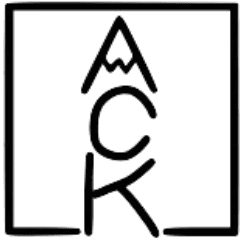
Parents often see their child struggle with subjects and want to help by lessening the burden, hiring a tutor, watching Khan Academy videos, or sitting with them to figure out how to work through those moments of struggle. These protective responses make sense, and it may feel like learning is happening as you or someone else walks them through this process. While I have nothing against this approach, I think reframing the problem and approaching it more thoughtfully might have better holistic outcomes for children. What if struggle isn't something to avoid but rather something to embrace for deeper learning? When students learn to lean into challenges and grapple with difficult concepts themselves, they develop not just new insights, but resilience, problem-solving skills, and confidence in their own abilities.
Research in educational psychology has consistently shown that learning happens most effectively in what psychologist Lev Vygotsky called the "Zone of Proximal Development" (ZPD) [1]—the sweet spot between what a child can do independently and what's currently beyond their reach. This is where the most effective learning happens and where support becomes crucial. At A.C.K. Academy, we try to create a map of each student's learning landscape. By mapping what they already know and pinpointing specific knowledge gaps, we design problems that fall precisely within their ZPD. This personalized approach allows students to work on problems that target exactly where the friction between current abilities and new challenges creates productive struggle—the precise point where growth is possible.
How do we identify these productive struggle points for each student? Sometimes the diagnosis is straightforward based on SMART Worksheet submissions. When a student consistently misapplies a specific rule or gets a particular problem wrong, the knowledge gap becomes evident. Other times, it's more nuanced, requiring mentors to engage in deeper conversations with the student. As mentors communicate strategically with the student, they guide them to reflect on their own learning process, encouraging self-diagnosis rather than simply providing the solution. By giving students autonomy over their learning journey, with mentors providing targeted support only when needed, they develop a sense of agency and responsibility, actively participating in identifying and addressing their own knowledge gaps rather than passively receiving instruction.
Once these gaps are identified, we design learning experiences that strategically challenge students at the right level. This could mean associating new words with concepts they already know or learning new concepts as they build on something they have already mastered. Even after mastery is gained, students will revisit these skills strategically to improve long-term retention. Recalling what they have already learned, even though somewhat unpleasant, is much more effective than relearning. Cognitive scientist Robert Bjork describes these as 'desirable difficulties' [2]—intentional challenges that make retrieval more effortful initially but strengthen memory pathways, leading to more robust learning outcomes and better application of knowledge in new situations. Mentors communicate that this productive struggle is necessary and valuable, that mistakes are to be expected, and that it takes time and practice to develop these skills. They share anecdotes from their own learning struggles, reinforcing to students that these challenges are worth pursuing, while ensuring students don't feel overwhelmed or shut down when facing difficulties. This is the type of challenge that keeps students engaged and ultimately promotes learn drive. When students engage in this productive struggle, their brains enter a narrow but workable state where physical changes occur through neuroplasticity, forming new neural connections as they grapple with challenges at the edge of their abilities.
As students master this process, they develop lifelong learning habits that give them a framework to approach new challenges. By becoming familiar with productive struggle and how to navigate it effectively, they build a foundation for learning that can be applied to any context. The journey becomes familiar—they recognize the initial confusion, the breakthrough moments, and the satisfaction that follows. Learning is hard—and that's exactly what makes it rewarding. The joy that comes from overcoming meaningful challenges promotes an intrinsic motivation that drives growth through learning, far beyond any single lesson or classroom setting.
Tips for Supporting Your Child's Learning Journey
As a parent, you can help your child engage with their learn drive by:
Encouraging productive struggle: Resist the urge to immediately help when they face difficulties
Providing a safe environment: Create a calm, judgment-free space where your child feels comfortable making mistakes and working through challenges
Observing their engagement: Notice when they seem appropriately challenged versus overwhelmed or bored
Praising effort over ability: "You worked hard on that problem" rather than "You're so smart"
Seeking appropriate support: Communicate with mentors about how your child feels about the work they are doing. Remember that mixed emotions—frustration, uncertainty, and even temporary discouragement—are normal parts of the learning process and often signal productive struggle
[1] L. S. Vygotsky, "Mind in society: The development of higher psychological processes," Harvard University Press, 1978, pp. 84-91. [Online]. Available: https://home.fau.edu/musgrove/web/vygotsky1978.pdf
[2] R. A. Bjork, "Memory and metamemory considerations in the training of human beings," in Metacognition: Knowing about knowing, J. Metcalfe and A. Shimamura, Eds. Cambridge, MA: MIT Press, 1994, pp. 185-205. [Online]. Available: https://gwern.net/doc/psychology/spaced-repetition/1994-bjork.pdf
